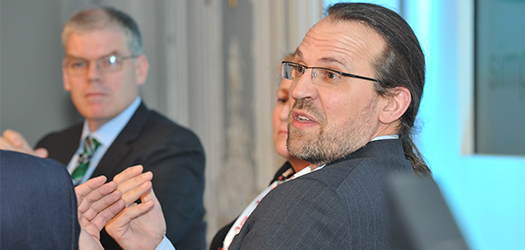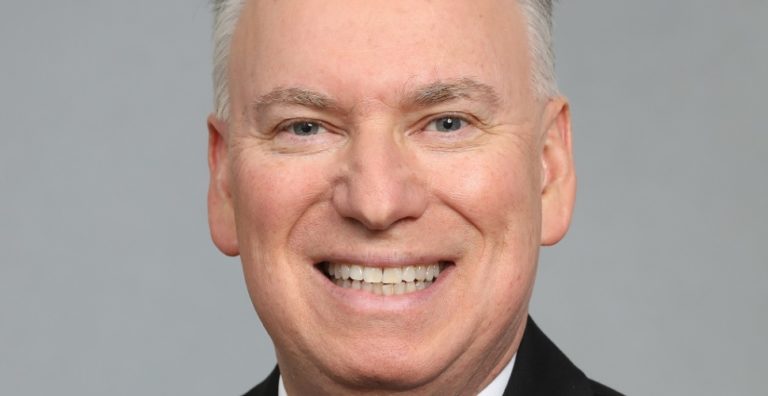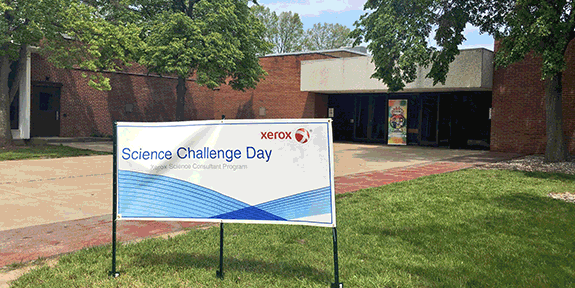By Kyle Denhoff

Dave Coplin is the CEO of Microsoft – but not the kind of CEO you might think. He’s Microsoft’s “Chief Envisioning Officer,” a role that has him coaching, guiding and encouraging employees and others about the use of technology in both work and play.
I recently got the chance to meet with Dave in London, during the Xerox Simple@ Work conference, and he fascinated me with his stories of our analog past and what companies are doing today to transform themselves in a digital age.
He shared with me the history of the keyboard. Typewriters were originally designed to prohibit writers from typing past a certain speed. Then why is the same design used on our laptops and smartphones today? “Because we’re human, we like past experiences and they shape our future experiences,” he said.
From the outset, he wanted me to understand that technology is only a tool, not a solution. “Put the people in the right place and supply them with the right technology, you’ll be on your way to transformation,” he said. After our 15-minute discussion, Dave left me with three lessons.
Lesson 1: Provide the Right Technology
ARVE Error: need id and providerDave told me his days chasing people around to get them to care about technology are over. The tide has turned, he said. The employees at Microsoft are passionate about technology and want a better technical experience at work. At home they are able to use their Microsoft phone, Netflix, Facebook, Uber, and OneDrive easily, but struggle to get daily tasks done in the office in the same, seamless way
The IT infrastructure and red tape of any global enterprise can be difficult. But now that employees are engaged and pushing for new technologies and new applications, companies are moving their transformations to a higher level.
Lesson 2: Reimagine the Way We Work
ARVE Error: need id and providerDave believes we’ve forgotten what productivity actually means. Our current definition “dates back to the industrial revolution. That is, output per unit of input,” he stated.
We have inherited these definitions from our very successful analog past — before the introduction of computers. But now, generally speaking, we’re at a stage where we continue to try to integrate new technology into old models. But technology now allows us to do things in new and different ways, Dave says.
Learn how Virgin Unite Mentors CEO Mark Thompson is transforming the customer experience.
By looking at technology through fresh eyes, and re-defining our purpose, organizations can then create processes that fit the opportunities of today. New processes lead to new outcomes through the addition of automation and streamlining. We then can redefine how we measure outcomes, Dave says.
Lesson 3: Engage Your Employees
ARVE Error: need id and providerDave and I discussed the people part of the equation – how to get employees engaged, even as the technological transformation scales across the company.
Dave said the key word is engagement – true engagement. “Just because I put a second telephone on your desk doesn’t mean you’re going to be twice as productive, right?” he asked.
Technology is only half the story. The energy and imagination of your people is what truly drives a successful business.
To truly transform your company, whether you are 100 years old or a start-up, you must have the right people engaged. Have a purpose. Connect to employees on an emotional level. Give them a full chance to sign on to the mission and vision.
The Future is Ambiguous
The future is ambiguous by nature and many organizations are in fear of change. But to stay competitive in a digital economy, each business must start to peel back their layers and discuss what they can do better.
Once you are able to redefine your outcomes, select the right technologies and empower your people, you’ll be on your way to transformation.
Each lesson is difficult to master individually but when all three are achieved simultaneously your business will thrive.
Subscribe to this blog and receive email updates when we publish a new article.





[…] This blog was originally published on the Xerox SimplifyWork blog. I am an employee of the Xerox Corporation. […]